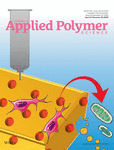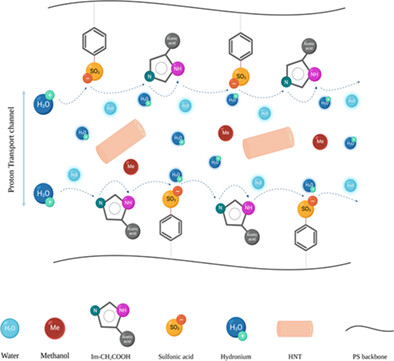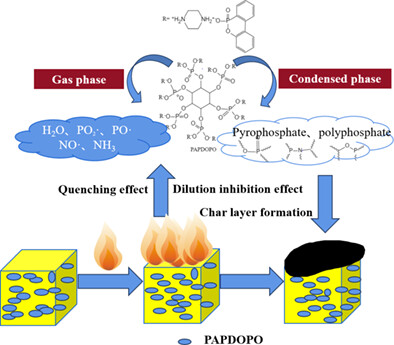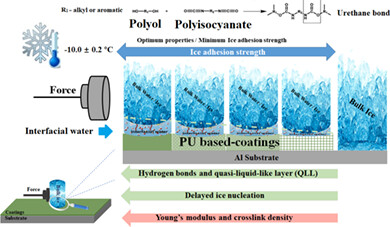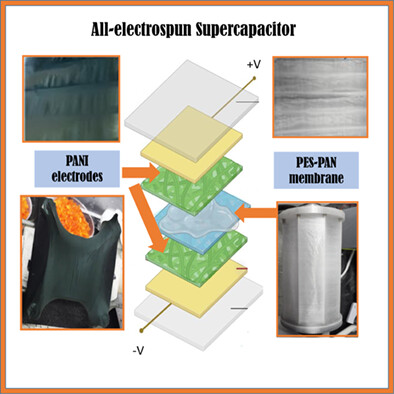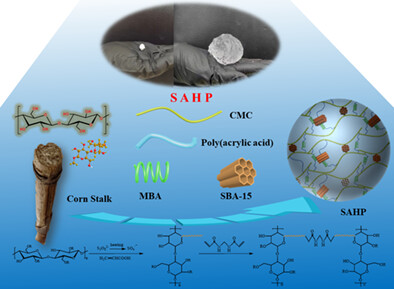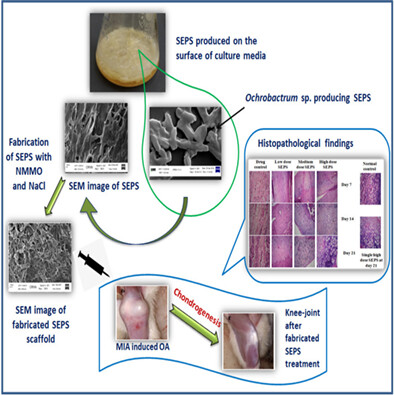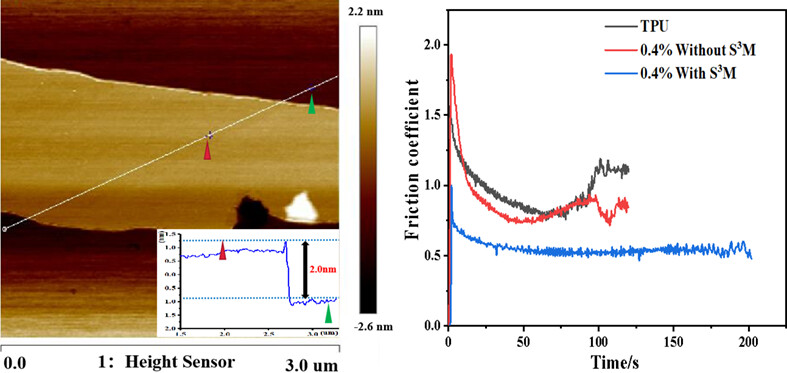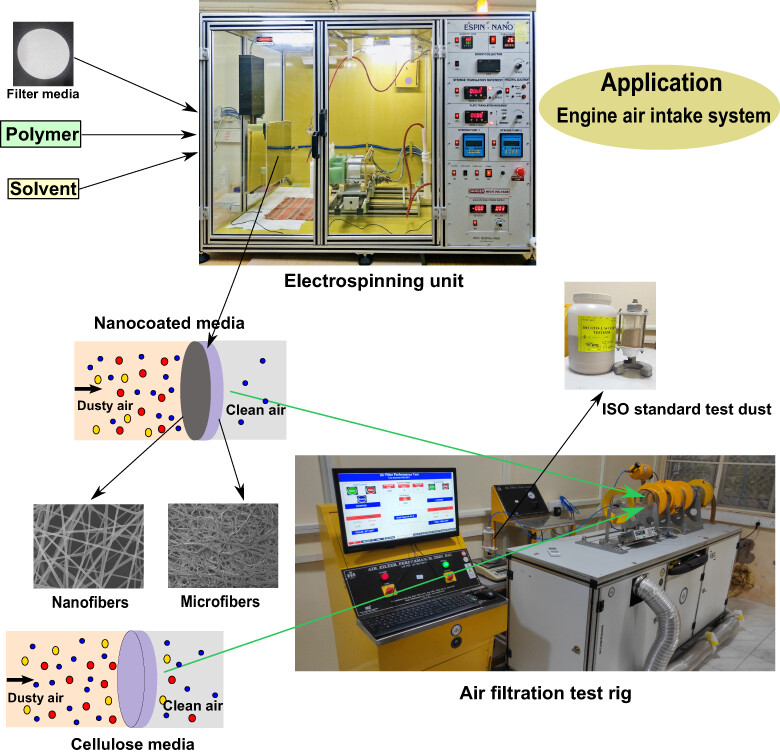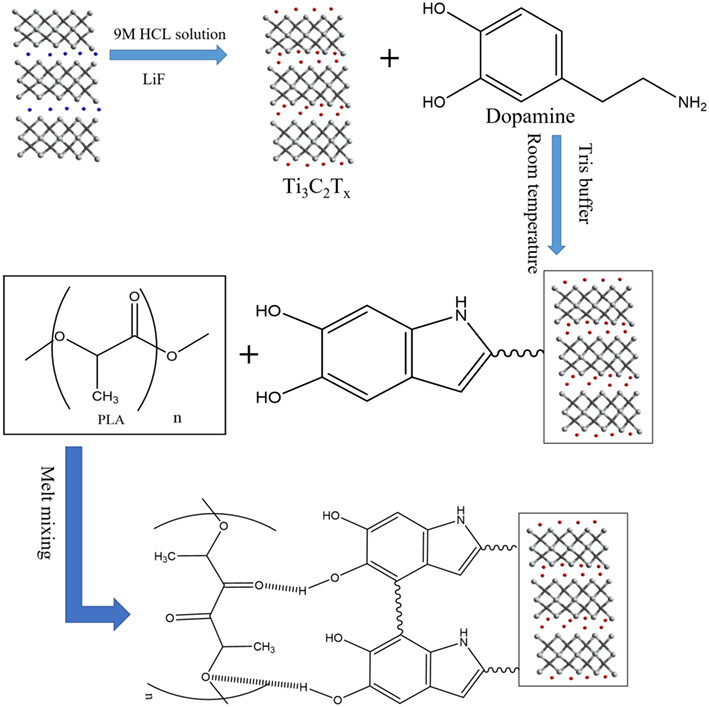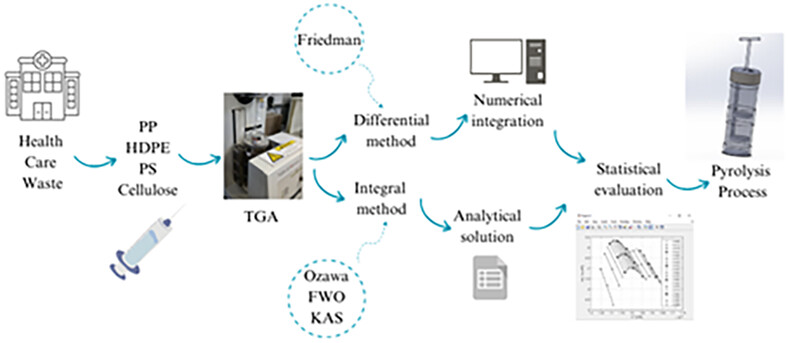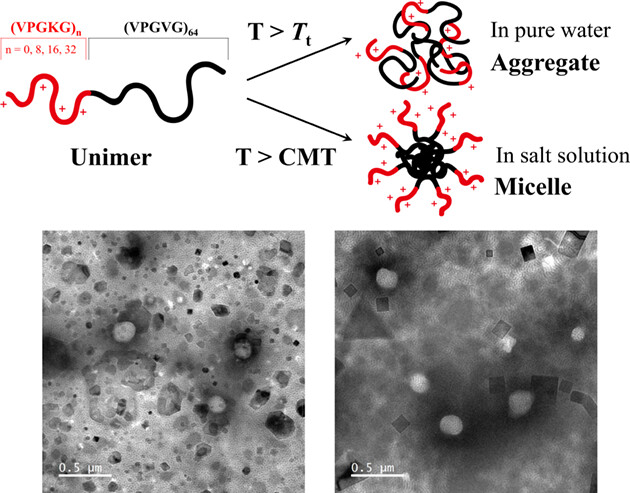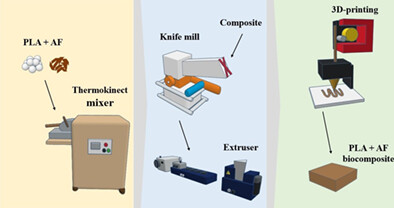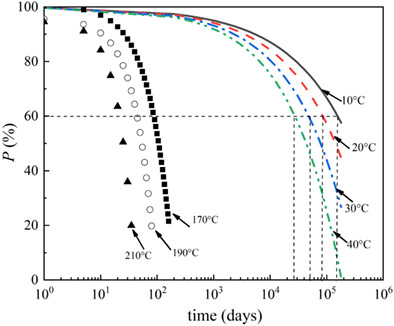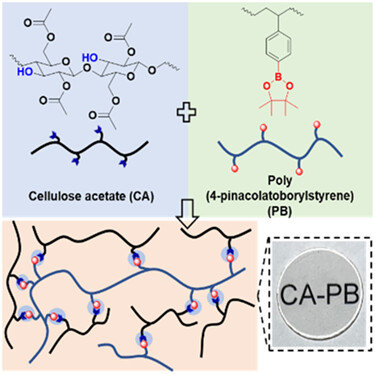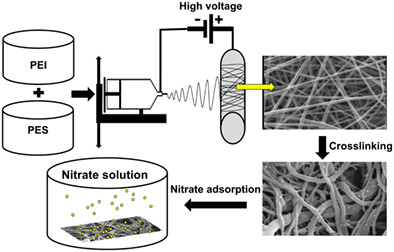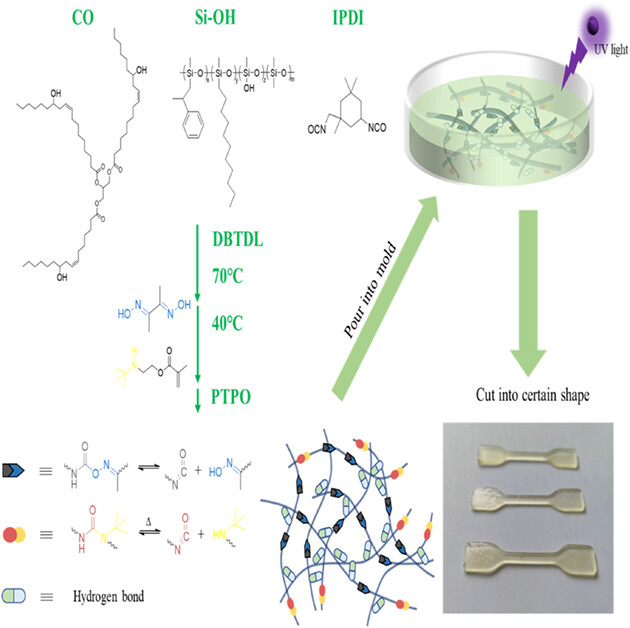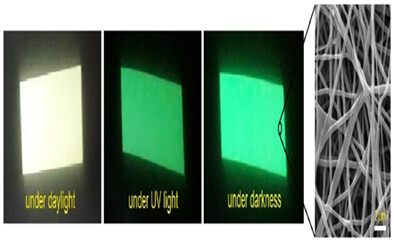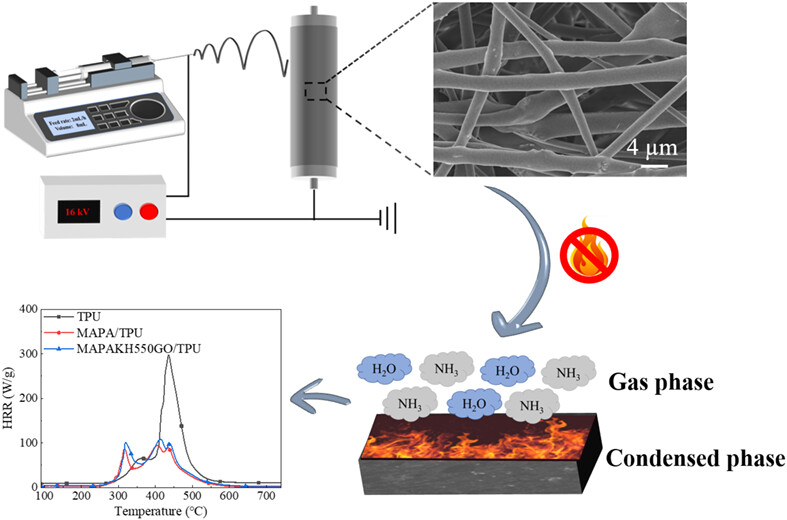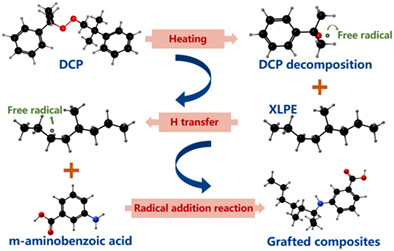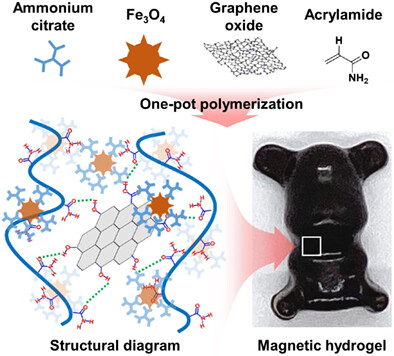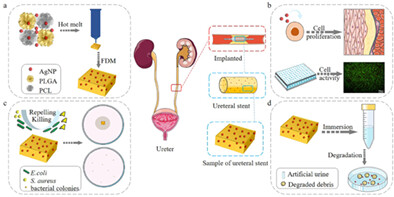Journal list menu
Export Citations
Download PDFs
COVER IMAGE
Cover Image, Volume 140, Issue 44
- First Published: 14 October 2023

The cover image by Dandan Dou (supervised by Lizhen Wang) shows how biodegradable antibacterial ureteral scaffold samples (PLGA/PCL/AgNP) were prepared by 3D printing. With good biocompatibility, the samples were under a strong inhibitory effect on Escherichia coli and Staphylococcus aureus. AgNP was released continually with the degradation, which can achieve a continuous antibacterial effect. The mechanical properties with AgNP were higher than those without AgNP. It provides a potential way to design ureteral scaffolds based on biodegradable polymers with AgNP in the clinic. DOI: 10.1002/app.54664
ISSUE INFORMATION
RESEARCH ARTICLES
Influence of carbon black particle size on fatigue life of rubber compound by varying strain and temperature
- First Published: 24 August 2023
Surface mineralization with controlled polymerization of dopamine
- First Published: 21 August 2023

Through altering the composition of polydopamine the characteristics of the coating can be controlled. This in turn allows for the control of the mineralization of calcium phosphate on the surface of the polymer. Normal PDA (top) does not produce a calcium phosphate layer as robust as the PDA sodium tetraborate hybrid coating (bottom).
Green synthesis of reactive copolymers in molten ε-caprolactam solvent and their compatibilizing effects in PA10T/PPO blends
- First Published: 28 August 2023
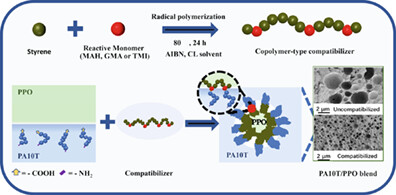
Molten ε-caprolactam was used as a green solvent to copolymerize styrene with three types of reactive monomers, namely maleic anhydride (MAH), glycidyl methacrylate (GMA) and 3-isopropenyl-α,α-dimethylbenzyl isocyanate (TMI). The synthesized copolymers were used as compatibilizers to modify the immiscible plant-derived poly(decamethylene terephthalamide)/polyphenylene oxide (PA10T/PPO) blends. The compatibilized PA10T/PPO blend has fine PPO domains and exhibited excellent mechanical strength and heat resistance.
Investigation of relationship between microcapsule shell structure, dispersion state and coating performance
- First Published: 28 August 2023
Nanocomposite proton conducting membranes based on sulfonated polystyrene/imidazole-2-acetic acid blend for direct methanol fuel cell application
- First Published: 19 August 2023
Preparation and properties of SBR/PPTA nanocomposite via in-situ interfacial polycondensation
- First Published: 21 August 2023
Flame retardancy and mechanical properties of epoxy resin with the phytic acid-derived flame retardant
- First Published: 21 August 2023
The effects of zinc hydroxystannate/boron nitride hybrids and aluminum diethylphosphinate on flame retardancy and smoke suppression of styrene–butadiene rubber composites
- First Published: 23 August 2023
New insights into tailoring physicochemical properties for optimizing the anti-icing behavior of polyurethane coatings
- First Published: 22 August 2023
Development of poly(ℇ-caprolactone)-based composite packaging films incorporated nanofillers for enhanced strawberry quality
- First Published: 18 August 2023
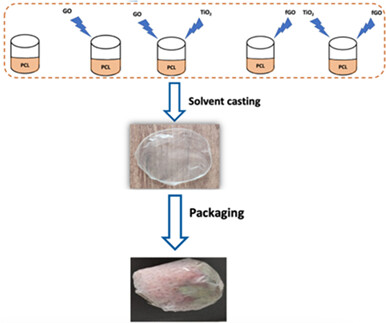
Graphene oxide (GO) has been successfully synthesized from graphite, and silane modified GO (fGO) has been subsequently functionalized by a silane agent. The PCL film and its nanocomposite films have been fabricated using the solution casting method. When the freshness of strawberries has been compared, the PCL/fGO/TiO2 nanocomposite film has the potential to be used as a food packaging film.
Development of an all-electrospun high-performance textile supercapacitor for wearable device applications
- First Published: 24 August 2023
Modified corn stalk carboxymethyl cellulose, acrylic acid and SBA-15 based composite hydrogel used for agricultural water retention
- First Published: 29 August 2023
Design, fabrication and evaluation of redox/pH dual-responsive micelles for tumor targeting delivery and controlled release of paclitaxel
- First Published: 24 August 2023
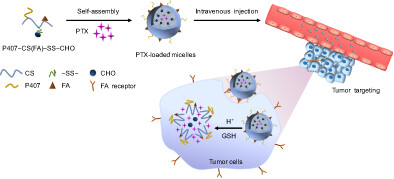
A redox and pH dual-sensitive polymer P407-CS(FA)-SS-CHO was designed and synthesized. The polymer could self-assemble into micelles and encapsulate paclitaxel. The micelles could be selectively uptaken by MCF-7 cells. Both acid and glutathione could trigger the drug release from the micelles. The micelles were potential carriers for paclitaxel delivery.
Fabrication of N-methyl morpholine-N-oxide modified bacterial exopolysaccharide as natural scaffold toward effective cartilage regeneration in monosodium iodoacetate induced experimental osteoarthritis
- First Published: 24 August 2023
Nitrate rejection of sulfonic acid group incorporated polyethersulfone-type nanofiltration membrane and reutilization of the concentrated solution
- First Published: 22 August 2023

The fabricated membrane bearing sulfonic acid group shows the desirable nitrate rejection efficiency (90.32%), acceptable solution filtration flux (10.15 L m−2 h−1 at 0.6 MPa), and decent pure water permeation flux (50.8 L m−2 h−1 at 0.6 MPa). Additionally, the concentrated nitrate was recycled for the electrochemical intercalation of flake graphite, achieving the resource utilization of NF concentrated solution.
Graphene stripping, a convenient and environmentally friendly technology for the preparation of polyurethane/graphene nanocomposites as a new type of highly wear-resistant materials
- First Published: 29 August 2023
Electrospun nylon-66 nanofiber coated filter media for engine air filtration applications
- First Published: 23 August 2023
Polydopamine surface modified Ti3C2Tx/PLA biocomposites with enhanced mechanical, thermal, and tribological properties
- First Published: 29 August 2023
Unlocking energy potential: Investigating thermal degradation and kinetic modeling of health-care waste polymers for enhanced pyrolysis conversion
- First Published: 31 August 2023
Self-assembly behavior of elastin-like polypeptides composed of charged and neutral blocks with different block ratio
- First Published: 28 August 2023
Enhancement of sustainable fused deposition modeling 3D-printing with agave Americana fiber-reinforced poly(lactic) acid biofilaments
- First Published: 23 August 2023
Life prediction of thermal aging of adhesive for retard-bonded prestressed tendons
- First Published: 01 September 2023
Surface grafting stearic acid to the coupling agent on attapulgite: A reinforced filler in castor oil-based polyurethane coating
- First Published: 04 September 2023
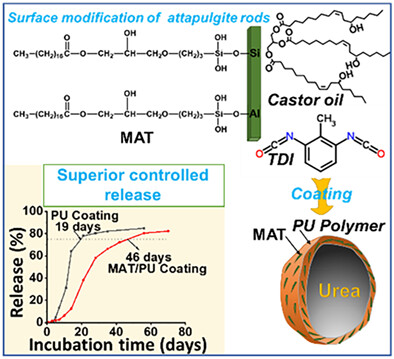
A novel composite coating was prepared from the acid-activated attapulgite (ac-AT) and castor oil-based polyurethane (PU). Specially, the ac-AT was modified by KH-560 coupling agent and in-situ grafted with stearic acid (MAT). The controlled-release performance of the composite was significantly enhanced due to the optimized hydrophobic and mechanical properties.
Strengthening cellulose acetate via solution-reprocessible dynamic interaction with poly(4-pinacolatoborylstyrene) cross-linkers
- First Published: 28 August 2023
Robust water-stable poly (ethersulfone)/poly (ethyleneimine) nanofibrous membranes for nitrate adsorption
- First Published: 02 September 2023
Preparation and properties of UV curable room temperature repair bio-based poly(siloxane-urethane) coating
- First Published: 02 September 2023
Sorption of vapors in methanol soaked and in thermally annealed Matrimid® films
- First Published: 31 August 2023
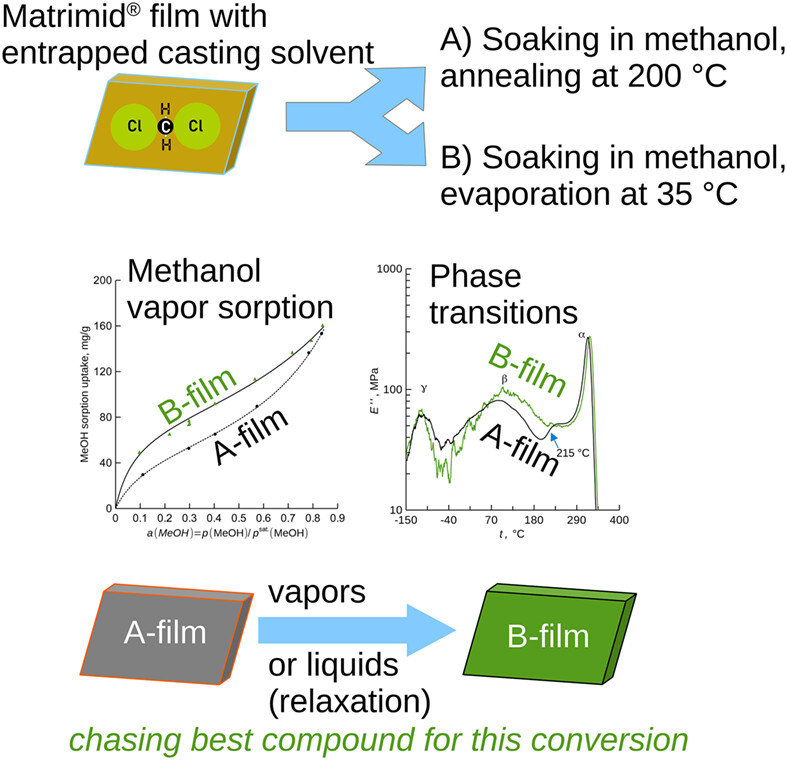
Solvent (DCM) entrapped in Matrimid® can be removed by soaking in methanol or thermal annealing. Methanol desorbs under mild conditions. Sample history determines the sorption characteristics and phase transitions. Annealed Matrimid® relaxes to the state of the methanol-soaked Matrimid® when exposed to studied volatile compounds.
Two different routes to prepare porous biodegradable composite membranes containing nanoclay
- First Published: 31 August 2023
Preparation of color-tunable electrospun cellulose acetate-polycaprolactone nanofibrous film for information encryption
- First Published: 28 August 2023
Synthesis of organic–inorganic hybrid flame retardant and its use in polyurethane composite fiber membrane
- First Published: 28 August 2023
Insulation properties enhancement of crosslinked polyethylene by grafting electron-buffering voltage stabilizers
- First Published: 28 August 2023
Preparation of graphene oxide enhanced magnetic composite hydrogels by one-pot method for selective adsorption
- First Published: 28 August 2023
Degradation behavior of polylactic-co-glycolic acid and polycaprolactone with nanosilver scaffolds
- First Published: 12 September 2023




